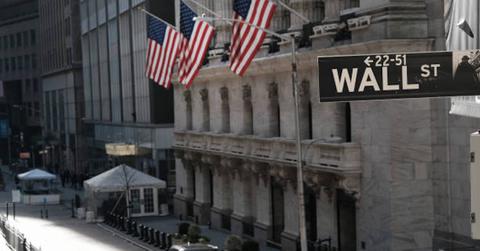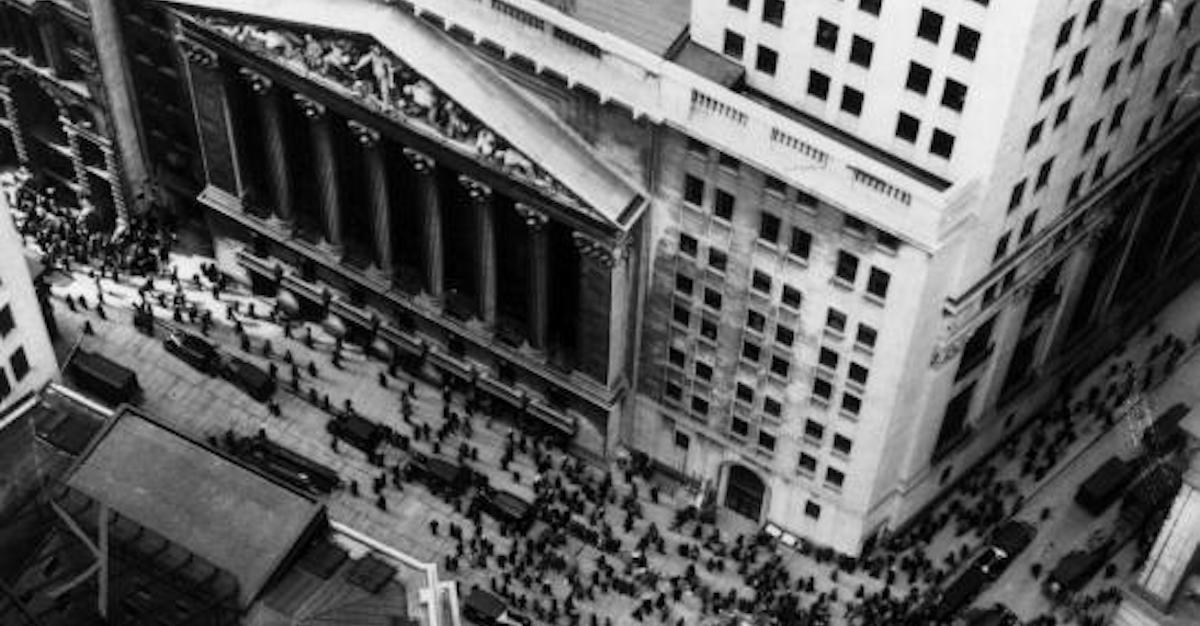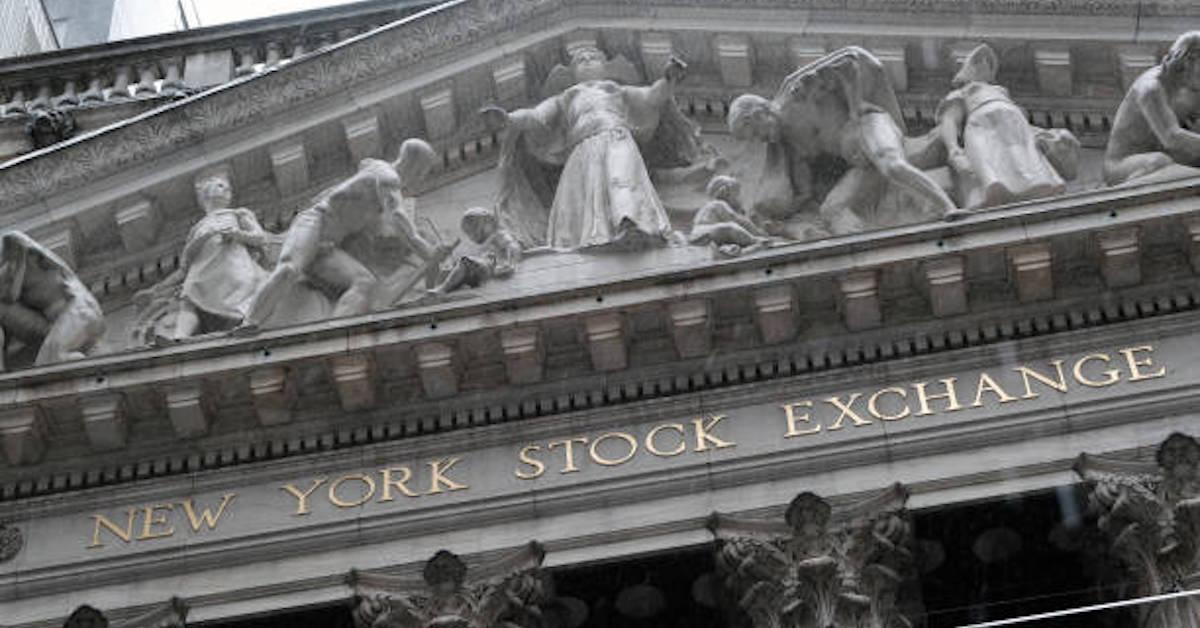How a 9-Foot Wall Turned Into Wall Street and the Home of the New York Stock Exchange
An actual wall once existed in New York City's lower Manhattan before it inspired the name of Wall Street. Here's the history of the street synonymous with the world of finance.
Nov. 4 2021, Published 9:02 a.m. ET

Wall St. sign
Wall Street is the financial heart of New York City and is home to NASDAQ and the New York Stock Exchange. The noteworthy street runs for eight blocks in the Financial District of Lower Manhattan. While it’s known for economic power, less known is how Wall Street got its name. It starts with an actual wall in 1652.

Crowds on Wall Street after the great stock market crash
Before there was Wall Street, there was a 9-foot wall.
During the Dutch-Anglo wars in the 1600s, settlers in Manhattan (which was then known as New Amsterdam) felt growing anxiety and fear of an attack from the British and Native Americans. To protect themselves, Dutch settlers fortified a 9-foot wall made out of wooden planks.
The wall itself was 2,340 feet long and featured cannons at each of its gates. The wall was erected by slaves across Lower Manhattan where Wall Street is today. The barricade was secured with gates where today you find Wall Street's intersections with Pearl Street on one end and Broadway on the other.
While this is the most widely accepted origin story, another debated among historians is that the name comes from French-speaking Dutch settlers in the area called “Walloons,” or "Waal." As time progressed, it is speculated that the entrance to the area was labeled Waal Street.
After a century, the wall was in disrepair and was eventually going to be demolished. However, amid fear of a French invasion, the wall was remodeled in 1693. It was officially demolished in 1699. The area transformed into the financial hub of the city when the Dutch used much of the area to conduct business, particularly trading slaves. Though slavery was already a large business, it wasn’t until 1711 when Wall Street was sanctioned by the government to be the official home of the slave market.

New York Stock Exchange building
The Buttonwood Agreement and How the Wall Street market evolved
Passed by the city council, the law stated, “...all Negro and Indian slaves that are let out to hire… be hired at the Market House at the Wall Street Slip.” By 1790, debt from the Revolutionary War was refinanced into the form of bonds worth $80 million, becoming the first publicly traded securities. While the name has its roots in early settlement and colonization, the Wall Street we know today was shaped by the Buttonwood Agreement.
The agreement was made by security traders who met under a literal buttonwood tree to make transactions. It also stressed the importance of keeping government intervention at bay. Outsiders were required to join this group or go through an approved broker if they wanted to buy stock. This agreement was used as the blueprint for the creation of the New York Stock Exchange board in 1817.
Well through the late 1800s, trading increased tremendously, with shares reaching 380,00 in 1824. The average daily volume reached 8,500 shares. Though growth was slow, it remained steady throughout the rest of the 19th century.
A street, buildling, and symbol.

Tour bus passing Wall street bull
Wall Street, is a symbol for wealth, business, bullish capitalism, and economic fortitude. To think Wall Street started as an actual wall is surprising, but also fitting.
